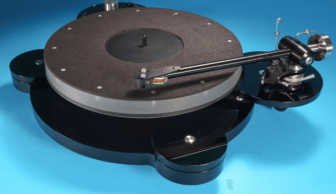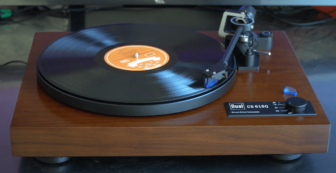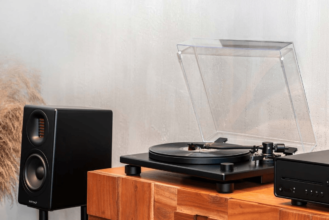VERTERE PHONO-1 MKII review
Armed and dangerous Vertere’s DG-1 combines a unique tonearm with plug-and-play ease. Adam Smith auditions it, along with the new phono stage. Read our VERTERE PHONO-1 MKII review.
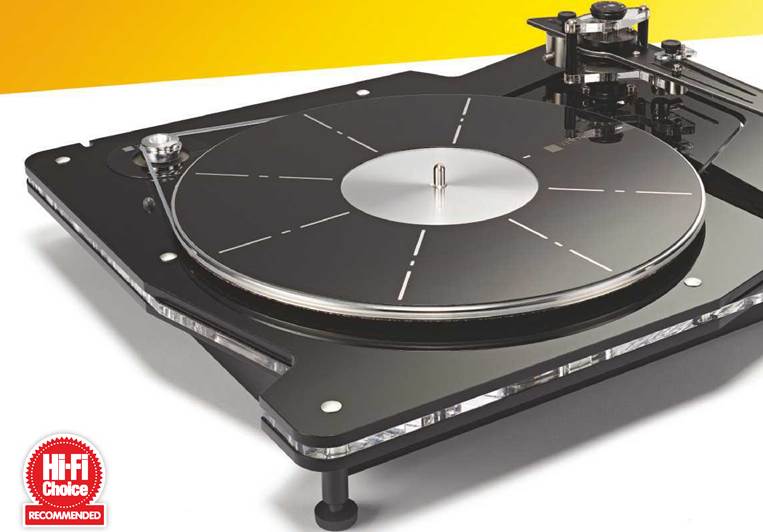
When a designer makes his or her mark with something exotic, there’s often a sense of trepidation when it comes to successfully trickling down the technology to the more affordable versions that are likely to be the big sellers. When the item is a turntable and the designer in question is Touraj Moghaddam, there’s a good chance that all will be fine. After all, this is the man who presided over many years of Roksan’s vinyl mastery, from the mighty TMS models right down to the affordable Radius decks.
In 2006, Touraj left Roksan to set up Vertere and initially focussed his attentions on a range of audio cables. However, the lure of vinyl was too strong and in 2013 the company released its first record player, the RG-1. More affordable models followed and the DG-1 is the new baby of the range, coming in complete with dedicated arm
DETAILS
PRODUCT Vertere DG-1/ Phono-1 MkII
ORIGIN UK
TYPE Belt drive turntable with MM/MC phono stage
WEIGHT
DG-1: 8kg
Phono-1 MkII: 1.25kg
DIMENSIONS (WxHxD)
DG-1: 469 x 384 x 130mm
Phono-1 MkII: 210 x 235 x 55mm
FEATURES
• 33 and 45rpm
• DG-1 Groove Runner tonearm
• Magneto MM cartridge
• Comprehensive MM and MC gain/ loading options
DISTRIBUTOR Vertere Ltd.
TELEPHONE 0203 1764888
WEBSITE vertereacoustics.com
and a Vertere D-Fi interconnect cable. Adding another £ includes the Vertere Magneto cartridge.
The DG-1’s distinctive platter consists of three layers – the central core is machined aluminium alloy, which has bonded to its underside a layer of material that is a mixture of cork, Neoprene and nitrile rubber. This controls resonance and damps the platter, which is then topped by a thermoplastic polymer layer that is used as a mat. This is both stylish and well finished, but also has two small dots printed onto it that are used for cartridge alignment.
The Groove Runner arm is rather unusual as it is flat and not tubular. As per Vertere’s other tonearms, it does not rotate on the usual metal ball bearings. Instead, vertical and horizontal movement is achieved through hundreds of twisted micro-fine nylon threads. Tracking force is applied by a stainless steel rear counterweight, augmented by a fine adjustment weight between the bearing and headshell. This means the arm is a little ‘wobblier’ than most and requires care when setting up.
All of this technology resides on a plinth that comprises two coloured acrylic layers with a clear layer between. Within this is a silicon-based suspension that decouples the main plinth from the sub-plinth. An acrylic dust cover is supplied that sits on hinges. Operation is simplicity itself with one illuminated button pushed sequentially to select 33rpm (green illumination), 45rpm (red) and a longer press for off. Even longer presses also program a layer of plinth illumination LEDs to be always on, always off or on only when the deck is in standby.
The Magneto cartridge is an MM design based on Audio-Technica’s AT-VM520EB. It has a bonded 0.3 x
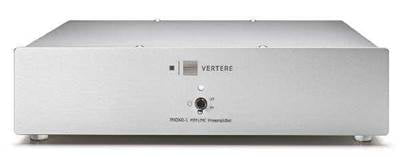
0.7mm elliptical stylus and aluminium cantilever. It tracks at a nominal 2g and has an output of 4.5mV, so should match easily with any MM phono stage you care to connect it to. Even better, it retains full compatibility with the styli used in the rest of the AT-VM5xx range. Consequently, you can upgrade at a later date to the heights of the MicroLinear one fitted to the AT-VM540ML should you wish.
The Phono-1 MkII’s unforced and natural treble performance is an utter delight
Vertere has also supplied the MkII version of the Phono-1 phono stage. Available with a silver, semi-matt black or fancy orange fascia, it only has one in and output but can cater for a huge range of cartridges thanks to its 15 load resistance, 9 load capacitance and 10 gain settings. These options are selected using an array of PCB-mounted DIP switches accessed via the underside of the case. They are fiddly, awkward to access and you must remember to make each of your settings twice as there is a set for each channel. Awkward though this is, it’s still an improvement on the original MkI – on which you had to remove the lid to make changes. Helpfully, the settings are printed on the case beside the switches, so at least you don’t have to go hunting for the manual every time you want to make an alteration.
As a final flourish, and to allow the full capabilities of both deck and phono stage to be explored, Vertere has also supplied an MC cartridge that it feels works well on the DG-1 – the Goldring Ethos (HFC 449).
Sound quality
I hook the DG-1 up into my regular Naim Supernait amplifier and PMC Twenty5.24 loudspeaker and have on hand my regular Anatek MMC phono stage to get a feel for the turntable on its own, and for a point of reference for the Phono-1 MkII.
Instantly impressive is the fact that it is not a recalcitrant turntable by any means. It knows exactly what it needs to do and so takes the performance, brushes aside any rough edges and serves up the overall musical message with a confidence and assurance that is quite superb, and like little else at its price level.
At the bass end of the spectrum, the DG-1 and Phono-1 MkII dig deeply, but don’t think for a moment that it is all bang and thump – the low end has a precision and detail that is absolutely magnificent. The main synth bass notes on Christine And The Queens’ Girlfriend rumble ominously from my loudspeaker with real intent, but free of any sense of wallow or
CONNECTIONS
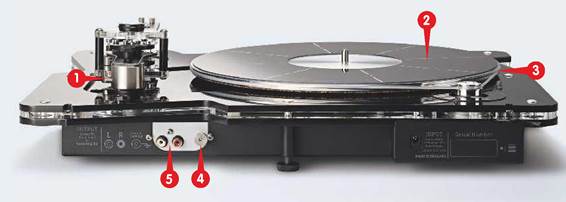
1 Stainless steel counterweight
2 PETG-bonded mat
3 Precision machined aluminium alloy platter
4 Grounding post
5 RCA stereo outputs
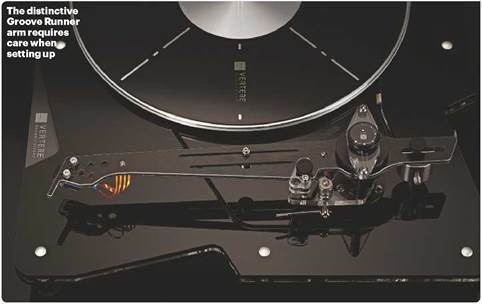
hesitancy, while the backing bass guitar line that is tucked subtly behind this skips along with a real lightness of touch.
Give the deck something with a bit more joie de vivre and it rises to the challenge superbly. The punchy drum beats from David Axelrod’s Holy Thursday hammer across with impact and precision. Every strike arrives with a snappy sense of timing and is furnished with a properly physical sense of stick-on-skin impact; the result is spectacularly realistic.
I also find myself rather taken by the soundstage that the DG-1 and Phono-1 MkII generate. Again, the word ‘solid’ comes to mind, and the pairing has a masterful way of bringing the main performers from the plane of the loudspeaker and out into the room towards me. With one or two tracks I play, there is an almost ‘reach-out-and-touch’ sense of realism. Swapping between the Phono-1 and my Anatek I realise that, although the latter is a brilliant unit that I have used for years, the Phono-1 seems to gently take it aside and ever so politely point out a couple of areas where there is room for improvement, mainly in terms of front-to-back stage depth and performer placement.
Even better, the Vertere combo’s mastery of space and depth seems completely independent of musical type. Kari Bremnes’ vocals from A Lover In Berlin are right in front of me while the bassline is once again deep and sinuous, and the percussion
The DG-1 serves up the musical message like nothing else at this price point
seems to be neatly arranged around my equipment rack. The final flourish is the oft-challenging piano, which is rich and resonant.
The best news of all is that this sonic performance is topped off with a top end that, once again, feels class leading. Treble detail is impeccable and the combination of the Audio- Technica-based cartridge and Groove Runner arm works beautifully. The result is a treble performance that
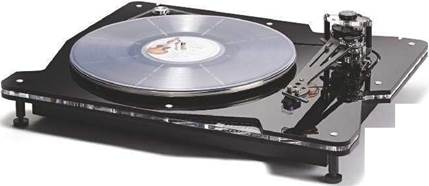
Non-resonant cast acrylic is used for the main and sub-plinth for a clean look
really could convince you that the instrument is in the room with you. It’s not just a good representation of it – the DG-1 and Phono-1 Mkll really seem to bring it to life. That said, I feel duty bound to break the seal on the Goldring Ethos MC to see how much further the combo can go.
When fitted onto the Groove Runner, the Ethos proves to be a formidable transducer. Even better, the flexibility of the Phono-1 MkII means it’s easy to get the best out of it. Through my Anatek phono stage with its fixed 100ohm loading, the Goldring sounds good, but a little politer than I’d ideally like. Moving to the Vertere unit and bringing that loading value down to the 78ohm setting gives it a lovely touch of sparkle that really shows the whole setup at its best. Tracking is secure without any hint of uncertainty and the midband takes on a sense of emotion and insight that is truly moving with the right material. Swapping back to the Magneto shows this is still a very capable cartridge and one which is worthy of recommendation on its own merit. Vertere has chosen its matching packaged transducer very well indeed. However, the Goldring Ethos makes it clear that the DG-1 and Phono-1 MkII have much more to give.
Conclusion
The Vertere DG-1 sets something of a new standard. While the integrated tonearm and pre-fitted cartridge effectively mean it is a ‘plug-and-play’ design, it still requires a little more care with its setup than one or two of its competitors. Make this effort and the rewards are astonishing.
The Phono-1 MkII is a similarly superb piece of design easily top of the tree at its price point. Its unforced and natural treble performance in particular is a delight. Put the two together and you may well have the vinyl bargain of the year •
OUR VERDICT
MoFi recently shook up the market with its superb Ultradeck +M (HFC 459). This is hot on the heels of the DG-1 in performance terms and undercuts it slightly.
Equally, Rega’s Planar 8 (HFC 443) comes with one of the company’s MC cartridges for a similar price and is very well liked. For me, though, the big competitor is the Michell Gyro SE which comes in at around £ with a Tecnoarm.
However, the Gyro really needs more money spent on a better arm to allow it to best the DG-1.



